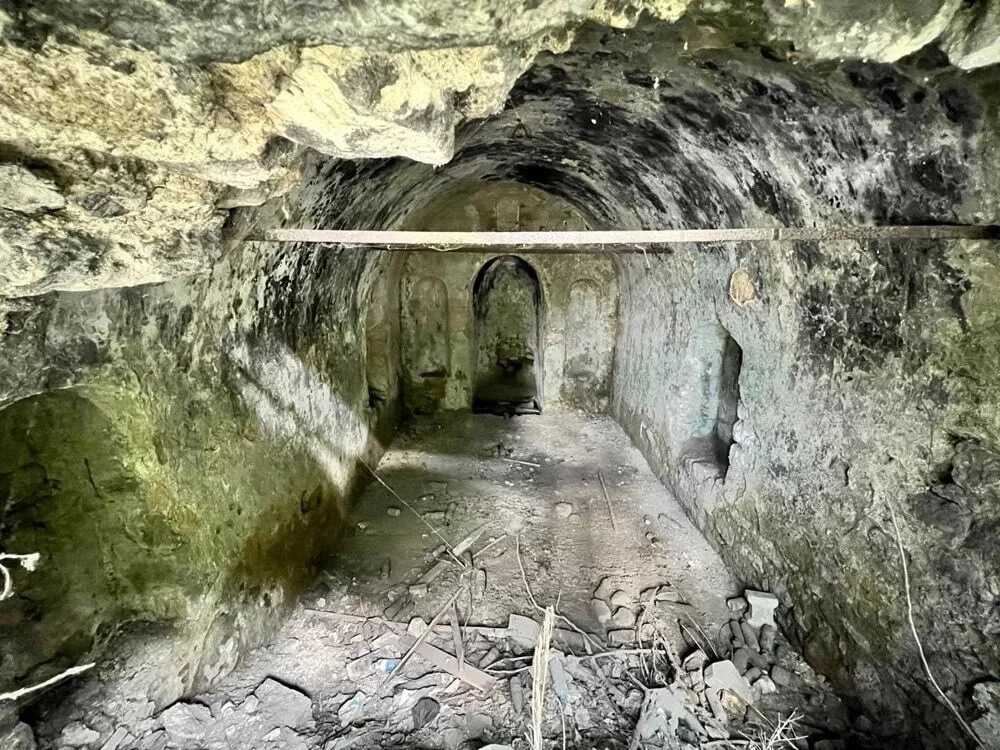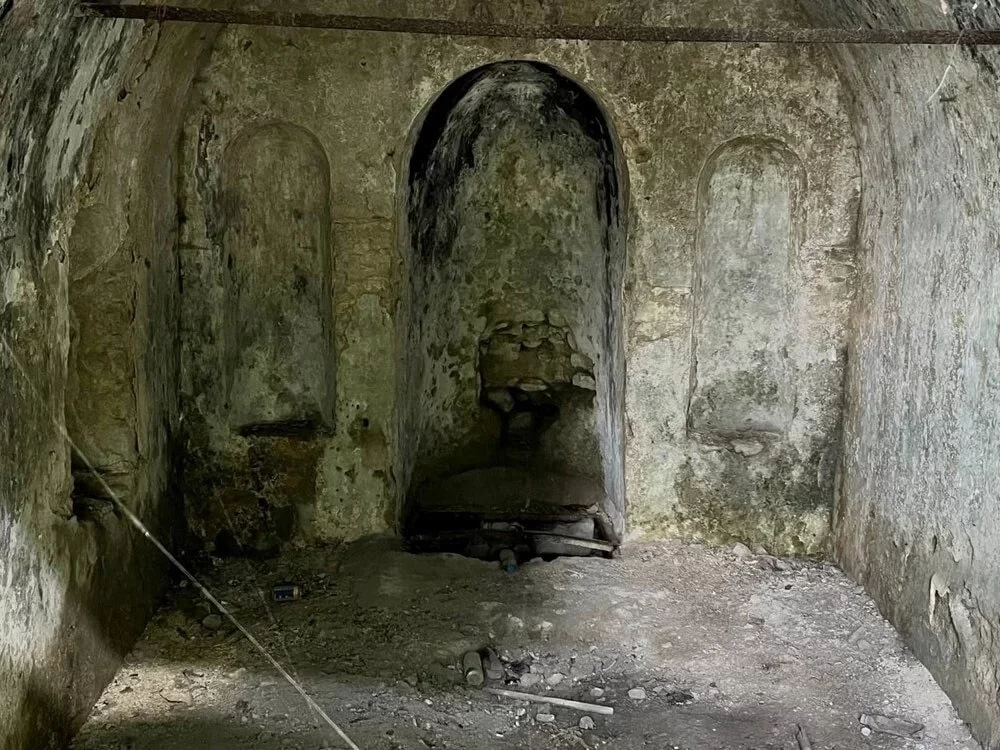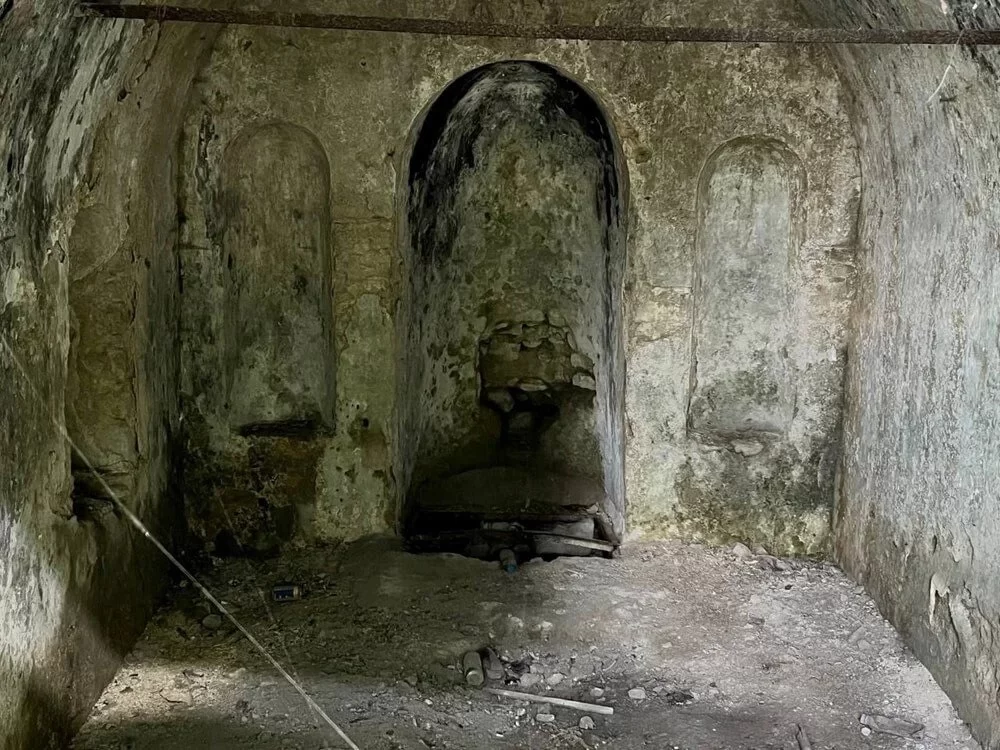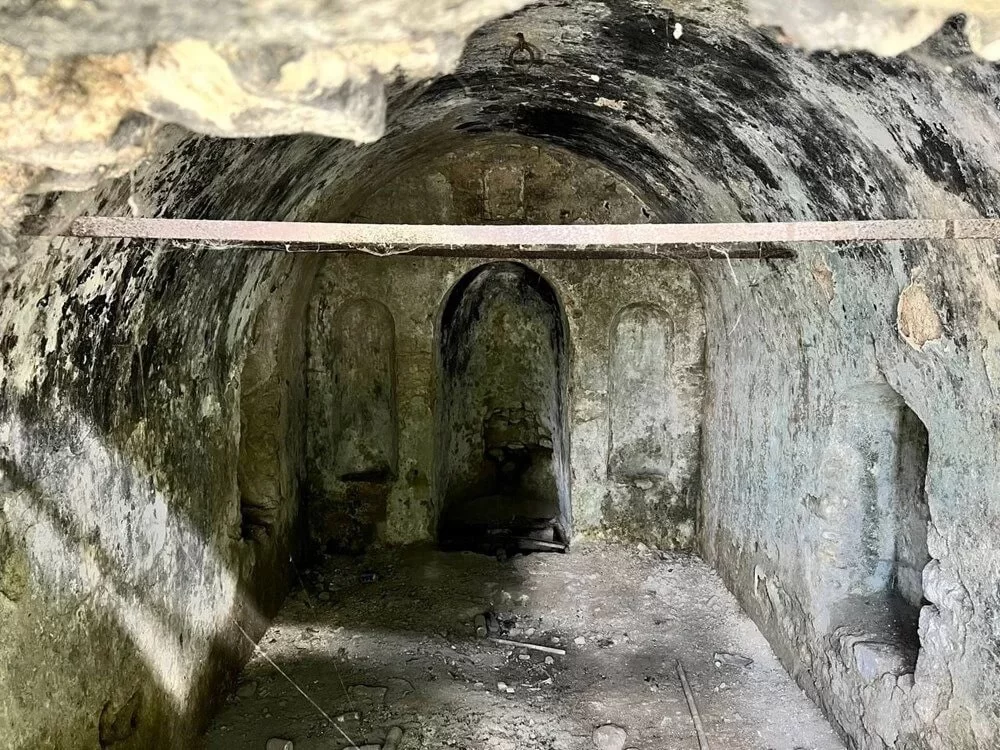
An unknown chapel discovered in Istanbul
A mysterious chapel was discovered underground in Bağcılar district of Istanbul.
From a distance, the structure, resembling a passage, has a school on top of it.
NTV reporter Sinan Kunter said that Archaeologist Ömer Faruk Yavaşçay, who answered his questions, stated that he noticed the historical structure while conducting research on city maps.
Archaeologist Yavaşçay points out that in some old maps, the building is indicated as “Ayazma,” which means holy water for Orthodox Christians.

Archaeologist Ömer Faruk Yavaşçay emphasizes that during the Ottoman era, there was a Greek village in the region, and he suggests that the structure was probably built by the people of the Greek village in the late 1800s.
Yavaşçay, who also spoke with the local community about the structure, learned that it was used as a fountain 25-30 years ago.

Ömer Faruk Yavaşçay suggests that in order to obtain more information, a detailed excavation work should be carried out in the region, and he emphasizes the need for maintenance and preservation of the chapel.

Bağcılar district is the fourth most populous district of Istanbul Municipality. It took its name from the abundance of vineyards in the area. The name “Bağcılar” means “vineyard growers” in Turkish. The district was formerly known as “Yeşilbağ,” which means “green vineyard” in Turkish.

When Bağcılar became a municipality, its name was changed to Yeşilbağ, and when it became a district, it was renamed Bağcılar again. During the Ottoman era, Bağcılar, which was predominantly inhabited by non-Muslims, had an old name, Çıfıtburgaz (Yahudburgaz).
You may also like
- A 1700-year-old statue of Pan unearthed during the excavations at Polyeuktos in İstanbul
- The granary was found in the ancient city of Sebaste, founded by the first Roman emperor Augustus
- Donalar Kale Kapı Rock Tomb or Donalar Rock Tomb
- Theater emerges as works continue in ancient city of Perinthos
- Urartian King Argishti’s bronze shield revealed the name of an unknown country
- The religious center of Lycia, the ancient city of Letoon
- Who were the Luwians?
- A new study brings a fresh perspective on the Anatolian origin of the Indo-European languages
- Perhaps the oldest thermal treatment center in the world, which has been in continuous use for 2000 years -Basilica Therma Roman Bath or King’s Daughter-
- The largest synagogue of the ancient world, located in the ancient city of Sardis, is being restored











Leave a Reply